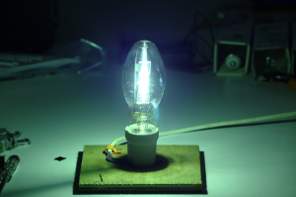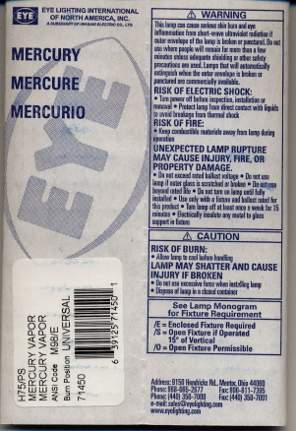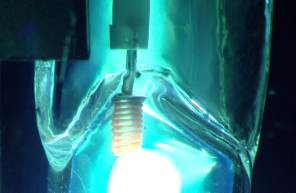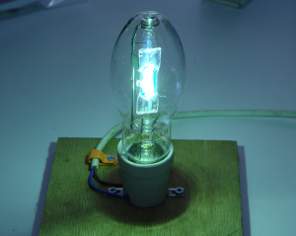Last change: September 03 2019
EYE Moon Pulse H75/PS
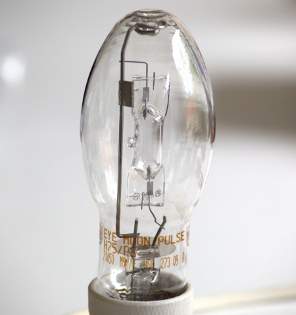
The story is as follows: the US energy efficiency EPACT legislation resulted in the National Electrical Code being changed so that after 2005 it was illegal to sell or import ballasts for mercury lamps in the US. Not the lamps, just the ballasts. This was designed to ensure that no more new mercury fixtures would be manufactured as ballasts would not be available. There was still one application however where mercury lamps- and clear ones at that- were vastly superior to anything else. This was (and is) landscape lighting, where the strong green and yellow lines of a clear mercury lamp spectrum highlight foliage really well.
So Eye Lighting came up with this solution for the US market- a clear mercury lamp which will run from pulse start metal halide ballasts. They called it Moon Pulse, further distancing it from the association with "old" mercury lamp technology, despite it being just that!
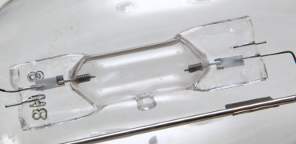
Remember this is a US- made lamp, manufactured in the Mentor, OH plant, and quite well made it is too, nickel plated cap and all. I wonder if the arc tube is US made as well...
The etch is not as nice as the Japanese Iwasaki lamps though, just a dot matrix printed one. In addition to the lamp and ballast designation, there is the number 71450 which is the product code, and the numbers 273 09. Not knowing the Eye date code system, I'll take a guess at the 09 being 2009, which makes sense as this is the first year these lamps were available.
The first thing to notice is the lack of starting electrode and resistor. Unlike conventional mercury lamps, which will actually be damaged by a MH ignitor, this lamp won't work without one. The reason for the electrodes being offset in the arc tube is unclear, perhaps it was a way to adapt the arc characteristics for the lower voltage/higher current of the MH ballast in comaprison to the equivalent mercury one?
Lit:

Interestingly, I found that on a UK 70W MH reactor ballast which should be the correct ballast for this lamp, the lamp was overrun somewhat and a better match was a 80W mercury reactor. Perhaps this might have to do with the different crest factor of a US HX ballast (which of course these lamps are intended for) resulting in the actual lamp power being different in practise? I'd have thought they should be 90V lamps as that's what 70W HPS and MH are but on a 70W HPS reactor ballast the lamp voltage was stubbornly high at 109V, but the current was about right at 1A. When I used an 80W mercury choke, I got 0.77A at 108V, and measuring the system power and taking into account ballast losses I make that about 78W lamp power, still a tad high. So from what I saw, these are mercury lamp characteristics with the higher lamp voltage...which makes me wonder if these lamps are just standard 80W arc tubes with no starting electrode, rebadged as 75W and overrun on MH gear but not suffering much as mercury lamps are anyway much more tolerant...?
